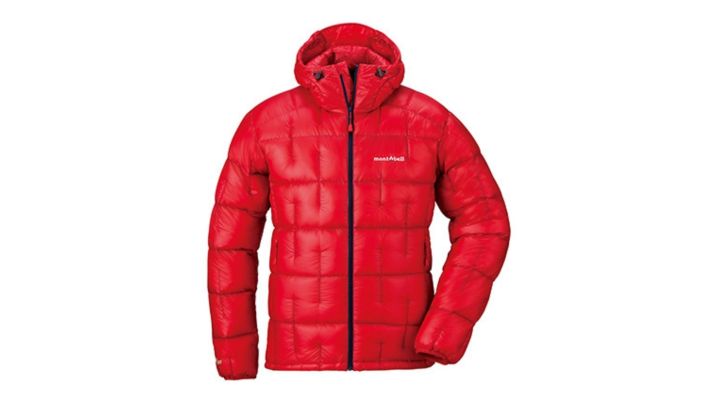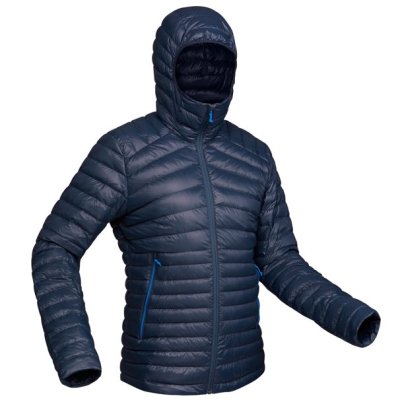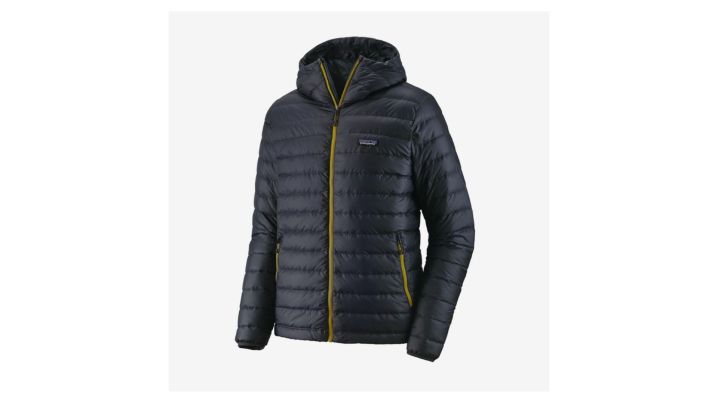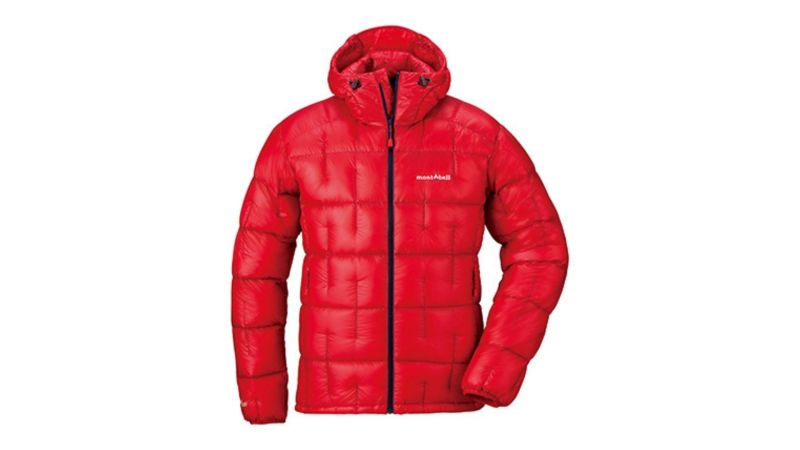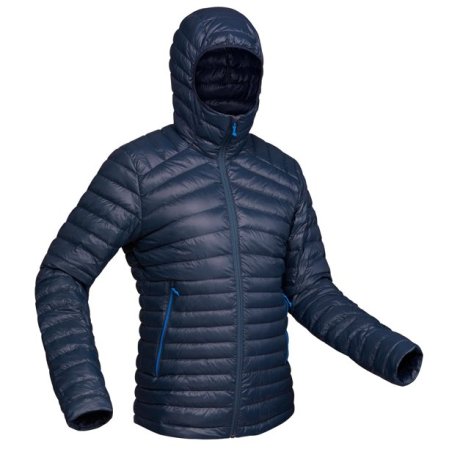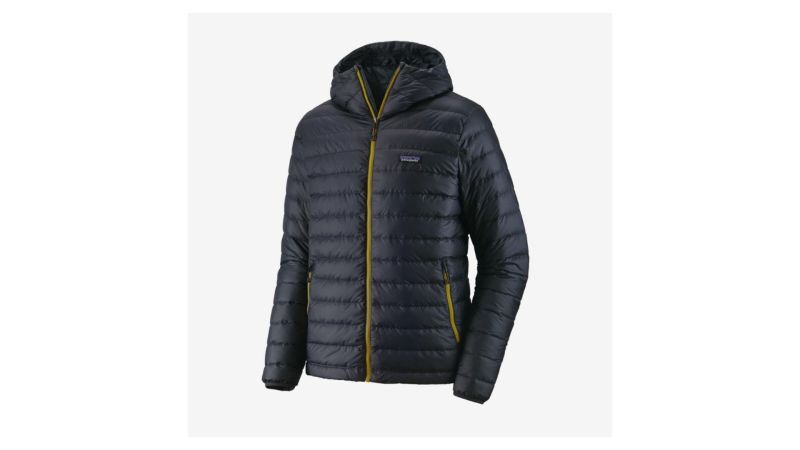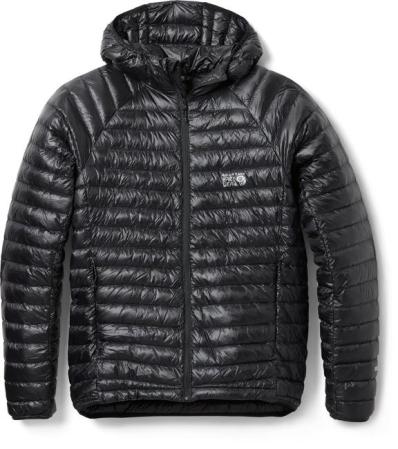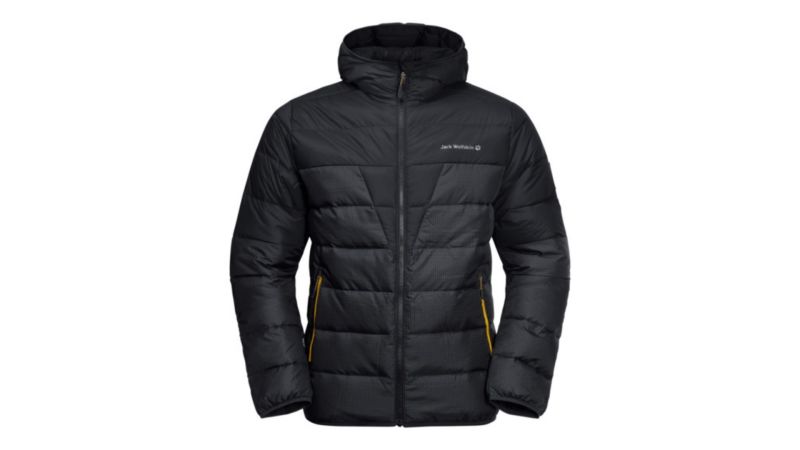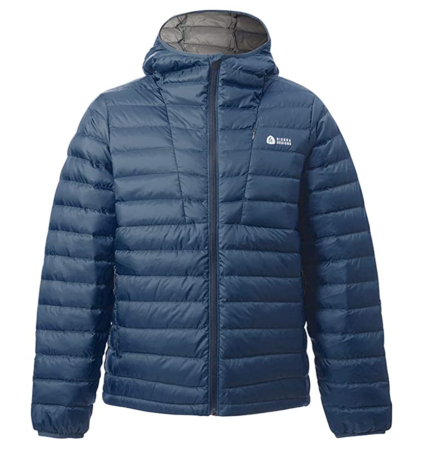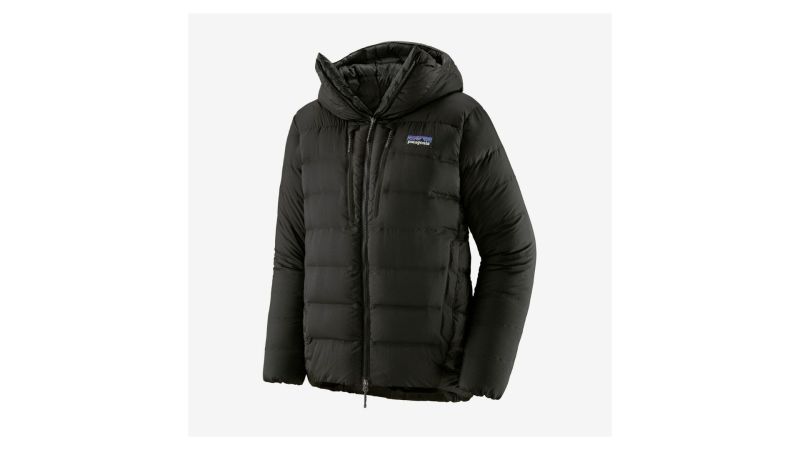We may earn revenue from the products available on this page and participate in affiliate programs.
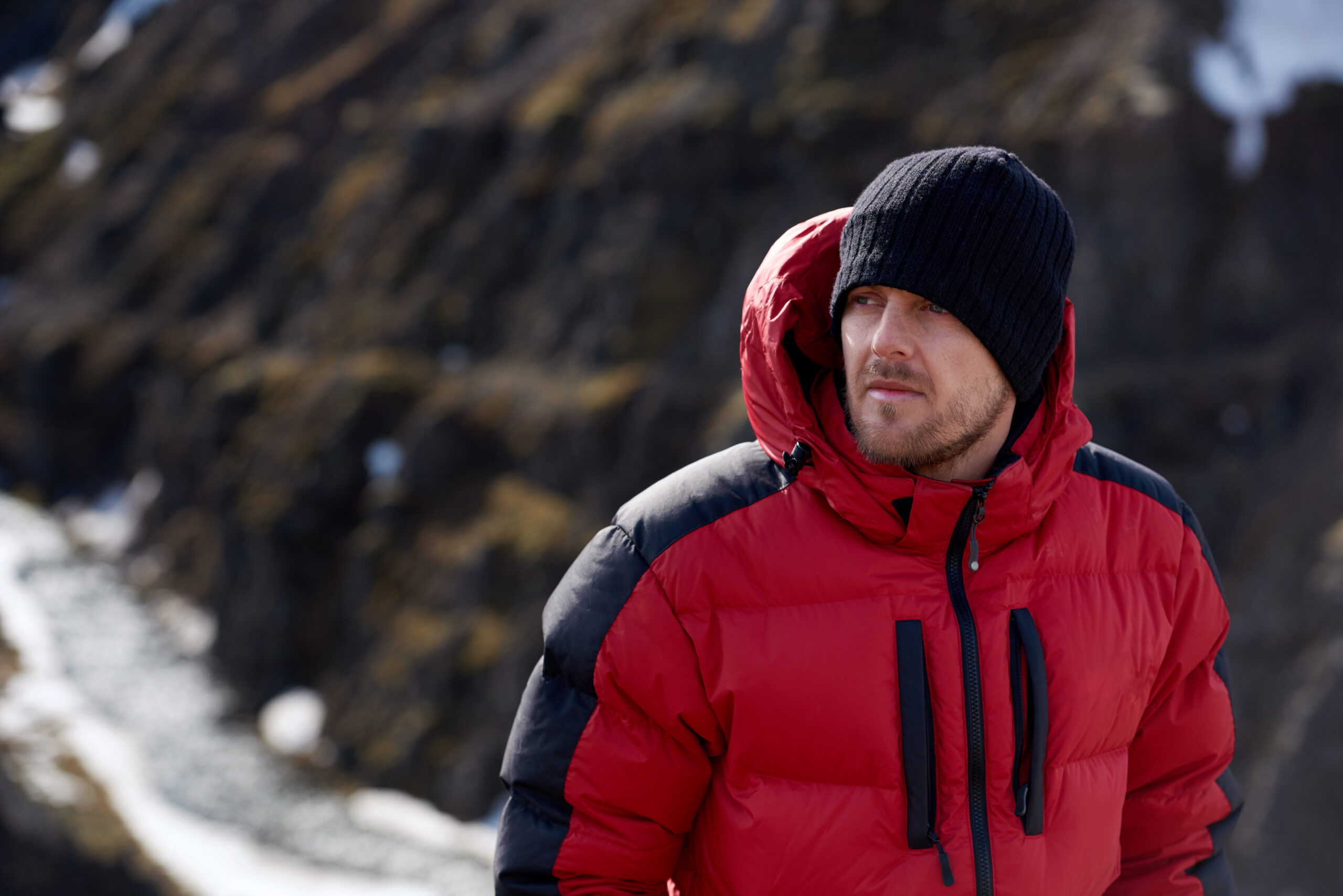
Whenever I head out into the backcountry, I dress in layers and bring a down jacket with me — every time, even in the summer. “Why?” you might ask. If you’ve spent any time in the military, you probably heard the old saying that cold kills. Well, that’s only half of it.
The truth is that it’s cold, plus moisture will set you speeding down the icy luge run to the great hereafter. When you expend energy while moving, your body creates heat. If that heat can’t escape, it builds up moisture in your clothing. When you stop moving, you stop generating heat, and that built-up moisture transfers the cold directly to your skin.
With that said, it’s important to get smart about layering and also selecting appropriate insulating layers so you can regulate both your body temperature and the moisture within your clothing. I generally start with a thin base layer like a Patagonia Capilene Cool lightweight shirt, add an R1 Air Full-Zip hoody for when I’m moving, and keep a down parka at the top of my pack to wear at breaks to stay warm.
Down, which comes from pumules from ducks and geese, is nature’s best insulator. Down offers the most warmth for the least weight and bulk. It’s super warm, light, and compressible. I’ve taken a look at the best down jackets to help you decide which is the best jacket that meets your needs.
Best Overall
Montbell Plasma 1000 Alpine Down Parka
Best Value
Decathlon Forclaz Trek 100
Editor’s Pick
Patagonia Down Sweater Hoody
Best Lightweight Down Jacket
Mountain Hardwear Ghost Whisperer UL
Best Entry Level Down Jacket
Jack Wolfskin DNA Tundra Hoody
Honorable Mention Value Down Jacket
Sierra Designs Whitney Hoody
Most Extreme Down Jacket
Patagonia Grade VII Parka
Why you should trust us
I have more than 35 years of experience living and working outdoors. I’m an avid long-distance backpacker, rock climber, and mountaineer who understands the value well-designed gear delivers, especially when your life depends on it. I don’t get paid by the manufacturers and have editorial independence. My editor leaves it to me to recommend and prints what I write. All of this enables me to provide you, our valued readers, with our unvarnished, honest opinions on the recommendations we make.
Types of down hackets
There are a bajillion different down jackets on the market, and choosing the right one for you can be a bewildering experience. It’s best to first think about what you’ll use the jacket for before starting your search.
Ultralight down jackets
When you have to carry everything you need on your back for days over many miles, every ounce counts. Ultralight backpacking down jackets seek to provide the most warmth for the fewest ounces carried. These jackets tend to use the fluffiest down (800 to 1,000 fill) and have very thin 5D to 7D shells that aren’t the most durable and require special care when wearing to avoid rips and snags.
They also have fewer features like chest pockets and adjustment points and tend to be the most expensive due to the high-performance materials used. These jackets generally weigh less than 10 ounces overall and have three to four ounces of down fill. They can be used as outer layers in warmer conditions and mid-layers in colder conditions.
Midweight down jackets
When you’re not obsessed with eliminating every possible gram, you get more options in terms of features and warmth. Most midweight down jackets for backpacking use 600 (less fluffy) to 800 (more fluffy) power fill down and have a hood, two hand warmer pockets, a chest pocket or two, and adjustable hoods and hems. These won’t be the absolute lightest jackets, but they’re good tradeoffs in terms of warmth, weight, and features. Midweight jackets generally weigh between 12 and 15 ounces overall, with five to six ounces of down fill.
Heavyweight down jackets
These super warm jackets are designed for cold and windy conditions. They often sport weather-resistant shells, large baffled hoods, and more insulation for true winter conditions. These jackets typically weigh more than 20 ounces overall, with more than eight ounces of down fill, and are designed to keep you warm in the harshest conditions.
Features of down jackets
Down fill power
The first thing you need to know about down jackets is the concept of fill power, which is a measure of the down’s quality and its loft. Fill power is an indicator of how many cubic inches of loft one ounce of down fill produces. For instance, 600 fill power down means one ounce of down would produce 600 cubic inches of loft. The higher the fill power, the better quality, higher loft, and higher firmness the down will have. Higher fill numbers like 800 to 1,000 indicate superior loft and insulating ability. It’s important to note that fill power alone is not an indication of how warm a jacket is. Fill power is an indicator of how warm the down is for its weight.
Down fill weight
Down fill weight indicates how much down by weight is stitched into the baffles of a jacket. Considering that down provides insulative warmth by trapping dead air next to your body, a jacket with four ounces of 800 fill power down will be substantially warmer than one with four ounces of 500 fill power down, and the 800 fill power down jacket will compress into a smaller package than the 500 fill power jacket. Also, a jacket with eight ounces of 800 fill power down will be twice as warm as a jacket with four ounces of 800 fill power down. Make sense?
DWR finish
Good down parkas will have a durable water-repellent finish to prevent precipitation from penetrating the jacket’s interior. This is important because down loses almost all of its ability to insulate if it becomes wet and clumps.
Hoods
A good down parka will have a hood to help keep your head warm. Do you need it? No. Some prefer a jacket and find hoods annoying. I find hoods to be useful, as they can help you better regulate your body temperature and moisture production.
Elasticized or adjustable hoods, wrists, and hems
Down parkas work because they trap dead air next to your body, and snug-fitting wrists, hoods, and hems help keep cold drafts out and warm air in.
Pockets
Minimalist or ultralight down parkas may just have two hand warming pockets or none at all. Midweight and heavyweight jackets tend to have two hand pockets, internal dump or stash pockets, and one or two chest pockets.
Benefits of down jackets
Warmth
Down is nature’s best insulator, and down jackets provide the greatest amount of warmth for the least amount of weight of any material in current use. The warmth of a jacket is the product of both the down’s fill power rating (fluffiness) and its fill weight (how much down is stitched into the jacket).
Lightweight
Ounce for ounce, down provides the best warmth available. Synthetic insulation cannot compete — yet.
Compressibility
Higher fill power down jackets can compress into very small, packable masses and then spring back to full loft when unpacked. Simply put, down parkas take up less room in your pack than their synthetic insulated cousins. When every inch counts, choose down.
Down jacket pricing considerations
Value
Bargain level down jackets range from $79 for the Decathlon Forclaz Trek 100 (800 fill power) to $120 for the REI 650 Down Hoodie 2.0. These jackets are typically used as a lightweight outer garment for three-season applications or as an insulating layer during colder weather.
Mid-range
Most of the jackets we reviewed fell into the $200 to $300 range for light and midweight jackets. Many factors impact the price to include the quality of the down (fill power), features, and materials used in the jackets.
Premium
We consider anything over $300 to be in the premium range of down jackets. This includes the much-loved Mountain Hardwear Ghost Whisperer 2 at $325 to the Patagonia Grade VII Parka at $899.
How we chose our top picks
The parkas recommended in this review were selected based on hands-on inspection, interviewing other experts, and thoroughly reviewing manufacturers’ specifications. We take our time to get to know the strengths and weaknesses of each item, and also check out the reviews of other experts just to make sure we’re not missing anything.
FAQs on down jackets
You’ve got questions, Task & Purpose has answers.
Q. Which down jacket is the warmest?
A. Typically, the ones with the most down by weight and the highest fill power down in them are the warmest.
Q. Is 800 fill power down warmer than 600?
A. Ounce for ounce, 800 fill down is warmer than 600 fill down, provided that the same amount of down by weight is used. Note that fill power is a measure of the down’s quality (loft), but this number alone won’t tell you how warm a jacket is. You’ll also need to take into account how many ounces of down are stitched into the jacket.
Q. Are down jackets good for hiking?
A. Absolutely. Down jackets provide exceptional warmth per ounce and great compressibility.
Our gear section
Joe Plenzler is a Marine Corps veteran who served from 1995 to 2015. He is a backcountry expert, long-distance backpacker, rock climber, kayaker, cyclist, wannabe mountaineer, and the world’s OK-est guitar player. He is currently section-hiking the Appalachian Trail with his partner, Kate Germano. He supports his outdoor addiction by working as a human communication consultant, teaching at the College of Southern Maryland, and helping start-up companies with their public relations and marketing efforts.
